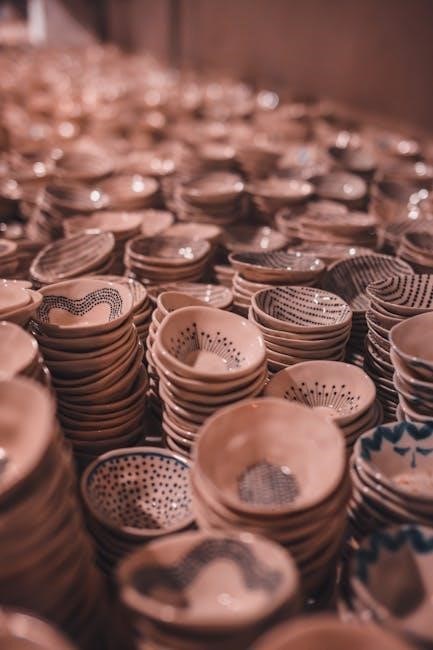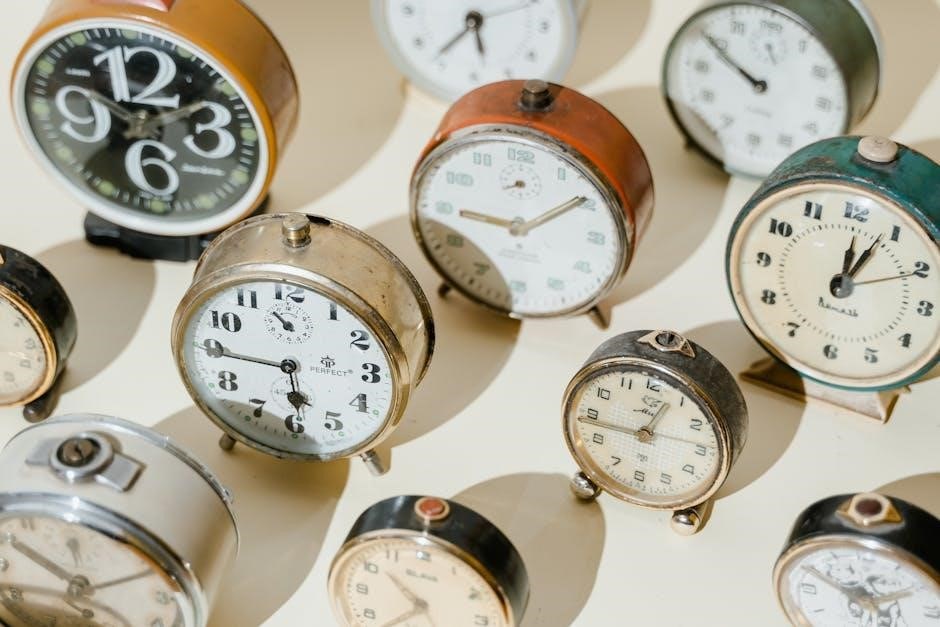24-Hour Urine Collection: An Overview
A 24-hour urine collection is a laboratory test․ It requires collecting all urine produced in a day․ The collected sample is then sent to the lab․ It helps doctors assess kidney function and diagnose other medical conditions․
Purpose of a 24-Hour Urine Collection
A 24-hour urine collection serves a multitude of diagnostic purposes․ It helps healthcare providers evaluate kidney function by measuring substances like creatinine, protein, and electrolytes excreted in urine over a full day․ This allows for a more accurate assessment compared to a single urine sample․ The test can diagnose kidney diseases, monitor their progression, and assess the effectiveness of treatments․
Moreover, a 24-hour urine collection aids in detecting hormonal imbalances․ It can measure hormone levels such as cortisol and catecholamines, crucial for diagnosing endocrine disorders․ The test is also valuable for identifying metabolic disorders by analyzing the excretion of specific metabolites․ Furthermore, it can help detect certain types of cancer by assessing the presence of tumor markers in the urine․ It also helps monitor medication levels․ Ultimately, it is a crucial test for monitoring and diagnosis․
Conditions Requiring a 24-Hour Urine Test

Several medical conditions may necessitate a 24-hour urine test․ Kidney diseases, such as chronic kidney disease and glomerulonephritis, often require this test to assess kidney function and monitor disease progression․ Suspected hormonal imbalances, like Cushing’s syndrome (excess cortisol) or pheochromocytoma (catecholamine-secreting tumor), also warrant a 24-hour urine collection to measure hormone levels․
Furthermore, metabolic disorders, such as porphyria and gout, may necessitate this test to analyze metabolite excretion․ The test is also used in the evaluation of kidney stone formation, helping to identify the underlying cause․ Certain types of cancer, like multiple myeloma, may also require this test․ Also, preeclampsia during pregnancy, requires it too․
Additionally, doctors might order this test to monitor medication levels․ Therefore, a 24-hour urine test plays a key role in diagnosing and monitoring․

Preparing for the 24-Hour Urine Collection
Proper preparation is essential for an accurate 24-hour urine collection․ This involves dietary adjustments, medication considerations, and gathering necessary supplies․ Following these steps ensures the test’s reliability and validity for diagnostic purposes․
Dietary and Fluid Intake Considerations
Maintaining a standard diet and fluid intake is vital before and during a 24-hour urine collection․ Avoid excessive physical exertion, which can alter urine composition․ Patients should exclude diuretics unless specifically instructed by their healthcare provider, as these medications significantly affect urine volume and electrolyte balance․ Consistency in diet and fluid intake helps ensure accurate test results․
Certain foods and beverages can interfere with specific urine tests․ For example, avoiding caffeine or alcohol might be necessary․ Follow your doctor’s guidelines regarding dietary restrictions․ Inform your healthcare provider about your typical daily diet․ This allows them to provide tailored recommendations for your 24-hour urine collection․ Sticking to these guidelines ensures that the urine sample accurately reflects your body’s function․ The sample will not be skewed by external factors․
Adhering to these dietary and fluid intake considerations is an essential step․ This ensures the reliability of the test results․ It’s also important for accurate diagnosis and treatment planning․
Medication Adjustments Before Collection
Before starting a 24-hour urine collection, carefully review all medications with your healthcare provider․ Certain medications can interfere with the test results, leading to inaccurate diagnoses․ Your doctor might instruct you to adjust or temporarily discontinue some medications․ This adjustment depends on the specific test and your overall health condition․
Never stop taking any medication without consulting your doctor․ Stopping abruptly can have adverse health consequences․ Your healthcare provider will provide specific instructions․ They will outline which medications to adjust and how to do so safely․
Some common medications that may require adjustments include diuretics․ Diuretics alter urine volume, and certain drugs affect kidney function or hormone levels․ Accurate medication information is crucial for interpreting the urine test results correctly․ Inform your doctor about all prescriptions, over-the-counter drugs, and supplements you are taking․ This proactive approach helps avoid potential interferences and ensures the reliability of your 24-hour urine collection․ It will lead to more accurate assessments of your health․
Necessary Supplies and Containers
To conduct a 24-hour urine collection successfully, gathering the necessary supplies and containers is essential․ You will need a large collection container provided by your healthcare provider or laboratory․ This container is usually made of plastic and may contain a preservative to stabilize the urine sample․ Ensure the container is clean and properly labeled with your name, date of birth, and the collection start and end times․
Additionally, you might need a smaller, clean container for collecting urine before transferring it to the larger container․ This prevents spills and contamination․ Some kits include a special funnel to help with the transfer process․ If the collection requires keeping the urine cold, have a cooler with ice packs ready․
Having these items prepared will streamline the collection process․ It will also ensure the integrity of the sample․ Confirm with your healthcare provider if any specific preservatives or additional supplies are needed․ Proper preparation contributes significantly to the accuracy and reliability of the test results․ It can impact the quality of the diagnosis․

Step-by-Step Instructions for Collection
Follow these detailed instructions for accurate 24-hour urine collection․ Proper technique ensures reliable test results․ It is important to adhere to each step․ Contact your healthcare provider with questions․
Starting the Collection: The First Void
The 24-hour urine collection process begins at a specific time․ Usually, it starts in the morning after you wake up․ This initial step is crucial for an accurate collection․
When you wake up, urinate as usual, but do NOT collect this first urine․ Empty your bladder completely․ This first void marks the official start time of the 24-hour collection period․
Record the exact date and time of this first void․ This information is essential for the laboratory․ Accurate timing ensures the test measures urine production over a full 24-hour period․
After discarding the first urine, you will begin collecting all urine․ This includes every time you urinate, day and night, for the next 24 hours․ Remember, the first void is discarded; all subsequent urine is collected diligently․
This precise start ensures that the sample represents a true 24-hour period․ Failing to discard the first void can skew the test results․
Collecting Urine Over the Next 24 Hours
After discarding the initial void, the next step is diligently collecting all urine for the next 24 hours․ Use the container provided by your healthcare provider or laboratory for this purpose․
Each time you need to urinate, do so directly into a clean, smaller container․ This prevents contamination of the main collection container․ Then, carefully pour the urine from the smaller container into the larger 24-hour collection container․
Ensure that the lid of the 24-hour container is tightly sealed after each addition․ This prevents spillage and maintains the integrity of the sample․ If the test requires preservatives, do not discard them․
Keep the collection container in a cool place․ Refrigeration is recommended unless instructed otherwise․ This helps preserve the sample and prevent bacterial growth․
Continue this process throughout the entire 24-hour period․ Collect all urine, even during the night․ If you are away from home, carry the smaller container․ Promptly transfer the urine to the larger collection container․
Final Collection: Completing the Test
As the 24-hour collection period nears its end, it’s crucial to ensure a complete and accurate final sample․ Exactly 24 hours after you discarded the initial void, you must urinate one last time․ This final void is essential for the test’s accuracy․
If possible, urinate directly into a clean, smaller container first․ Then, carefully pour this last urine sample into the 24-hour collection container․ This method minimizes the risk of spilling or contaminating the final sample․
If you don’t feel the urge to urinate at the 24-hour mark, try your best to empty your bladder․ This ensures that all urine produced within the 24-hour period is included in the sample․ A complete collection is vital for reliable test results․
After adding the final sample, securely seal the 24-hour collection container․ Double-check that the lid is tightly closed to prevent leakage during storage and transportation․ The collection is now complete and ready for the next steps․

Post-Collection Procedures
After the 24-hour urine collection is complete, proper handling of the sample is essential․ This involves correct storage and timely transportation to the laboratory․ These steps ensure the integrity of the sample․
Proper Storage of the Collected Urine
Once the 24-hour urine collection is complete, the next crucial step involves proper storage․ Maintaining the integrity of the sample is paramount for accurate test results․ Generally, the collected urine needs refrigeration․ Keeping it cool helps prevent bacterial growth and chemical changes that could alter test outcomes․
The specific temperature requirements may vary depending on the test ordered․ It’s always best to adhere to your healthcare provider’s or the laboratory’s instructions․ Usually, storage in a refrigerator at around 2-8 degrees Celsius (36-46 degrees Fahrenheit) is recommended․ Ensure the container is sealed tightly to avoid leakage․
Avoid freezing the sample unless specifically instructed to do so․ If refrigeration is not immediately available, store the container in a cool, dark place until it can be refrigerated․ Always follow the guidelines provided to avoid compromising the sample’s quality․
Transporting the Sample to the Laboratory
After completing the 24-hour urine collection and properly storing the sample, the next critical step is transporting it to the laboratory․ Timing is important․ Deliver the sample as soon as possible after the collection period ends․ This helps ensure the accuracy and reliability of the test results․ Contact the lab to confirm their hours and any specific delivery instructions they might have․
When transporting, keep the urine container in a cooler with ice packs․ This helps maintain the required temperature during transit, especially if there’s a delay․ Secure the lid tightly to prevent leaks․ Place the container in a sealed bag to provide an extra layer of protection․ Handle the sample with care to avoid agitation, which can affect the integrity of certain analytes․
Make sure the container is clearly labeled with your name, date of birth, the date and time of collection, and any other information requested by the lab․ Follow all instructions to ensure proper processing․
Potential Errors and Troubleshooting
Accurate 24-hour urine collection is essential for reliable test results․ One common error is forgetting to collect all urine during the period․ If a void is missed, contact your healthcare provider for guidance․ They may advise restarting the collection․
Another issue is improper storage․ If the urine isn’t refrigerated or kept cool, it can affect the stability of certain substances being measured․ Follow the storage instructions carefully․ Spilling urine during collection is another potential problem․ If a significant amount is spilled, inform your doctor, as it may necessitate restarting the test․
Certain medications or dietary factors can interfere with urine composition․ Always inform your healthcare provider of all medications and supplements you’re taking․ If you have questions or concerns during the collection process, don’t hesitate to contact the laboratory or your doctor for assistance․ Accurate collection ensures the test’s value․

